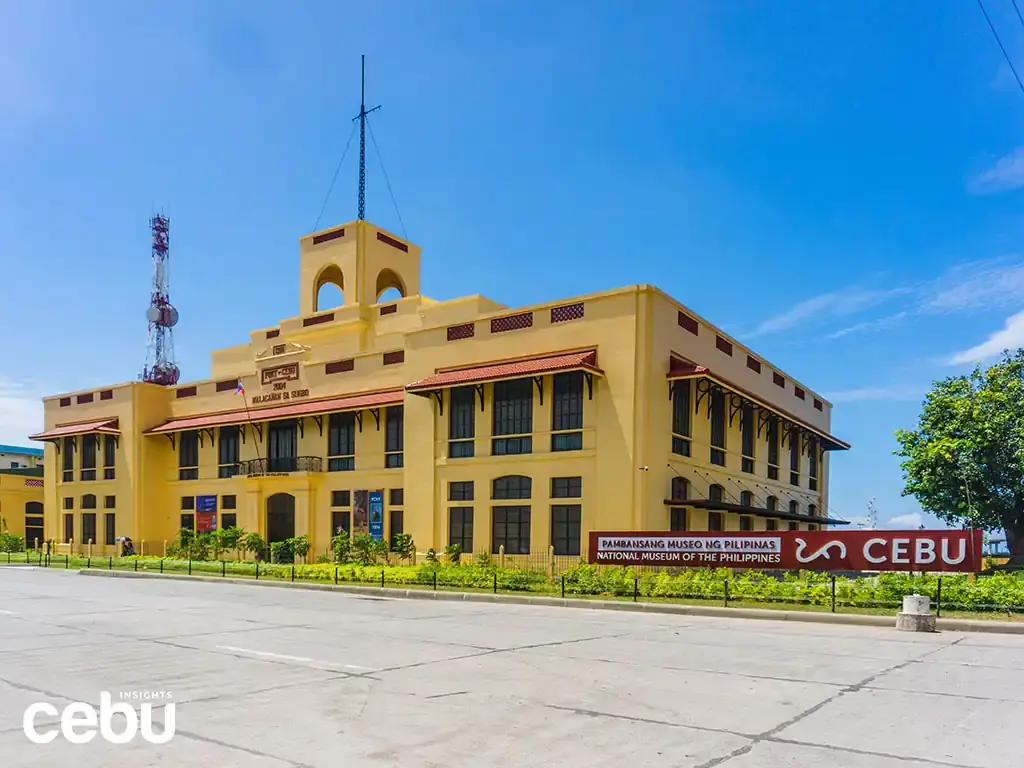The National Museum of the Philippines recently opened a branch in Cebu City.
The National Museum of the Philippines is the country’s main depository for antiques and relics relevant to Philippine history. With its vast galleries containing historical artifacts and dazzling artwork, it’s a sought-after tourist attraction for history buffs and art enthusiasts across the country.
The NMP has opened its 16th component museum in the Queen City of the South, housing several galleries and exhibits filled with paintings, replicas, and other items of historical significance.
The museum has hundreds of paintings and historical artifacts on display.
It opened to the public on August 1st, 2023 at the Aduana Building, previously known as Malacañang sa Sugbo. Entering the museum is free of charge.
There are other heritage sites nearby as well, like the Plaza Independencia, Basilica del Sto. Niño, and Fort San Pedro.
THINGS TO KNOW BEFORE ENTERING THE MUSEUM
(Photo courtesy of the NMP - Central Visayas Facebook Page)
Upon entering the National Museum, make sure to observe proper conduct and abide by the guidelines.
Keep in mind that you can only bring a small bag since big backpacks are not allowed inside. The museum offers a storage room for you to keep your belongings, but it may be safer to leave them at home and only bring the essentials.
Make sure to eat your breakfast or lunch before going to the museum since food and beverages are not allowed inside. Tumblers and bottled water are also prohibited inside, so make sure to keep yourself hydrated before entering the museum.
If you want to document your visit, remember to turn off the flash on your phone. Flash photography is prohibited, as it can destroy the quality of the paintings. You may opt to take photos in natural lighting.
Subsequently, taking videos is not allowed inside the museum. Professional video cameras, monopods, and tripods are only allowed with the discretion of management.
Other items not allowed inside the museum include:
- Hats
- Wired audio devices like headphones or headsets
- Plants
- Art materials
GALLERIES INSIDE THE NATIONAL MUSEUM OF THE PHILIPPINES – CEBU
The National Museum has five galleries within its three floors. Aside from the exhibits, the National Museum of the Philippines – Cebu is the first to have a Museum Shop among all the other component museums.
The second floor is filled with paintings and sculptures made by Filipino artists, and there is an exhibit from the Philippine New York Collection of 1974.
The third floor has a tower hall and rooftop area, but as of writing it is still temporarily closed.
Your tour starts at the right side of the entrance, with paintings depicting the arrival of the Spaniards in the 1500s.
These paintings refer to pivotal moments, such as the planting of the Magellan’s Cross, the first baptism and mass, and the Battle of Mactan.
Next to this area is the museum’s first gallery, the “Kinaiyahan: Cebu’s Natural Wonders.” This gallery showcases the different rocks, animals, and plants that are endemic to the island.
You will also find different species of birds and insects.
There is a large model of a butanding (whale shark), which is commonly found along the waters of Oslob.
Whale sharks are extremely popular in Cebu. They are even considered a famous attraction recommended to tourists.
Authorities offer tours to let visitors get up close and personal with the creatures as well.
The National Museum of the Philippines has a dozen rocks on display, which were recovered from the mountains of the island. Research on these rocks show the presence of fossils and other materials that have been around for over 100 million years.
The museum also showcases various energy resources such as coal and oil that are commonly used around Cebu, including different items used by Filipinos to power up machines. This particular exhibit gives you a glimpse of the island’s rich mining culture.
The sample of crude oil at the museum was taken from the oil field in Alegria, which is the only onshore oil field in the entire country.
At the end of the exhibit are Mobile Museum Boxes, which serve to safeguard the dioramas and other important items relevant to the history and tourism of the Philippines.
Items placed inside the boxes include a diorama of the iconic Chocolate Hills in Bohol, shells, tiny birds, and local products showcasing the artistic side of the Filipinos.
The second gallery features old treasures that were excavated around the island. You will find jewelry, ceramics, and old burial pots that highlight the island’s funerary practices before colonization.
On display are different plates, household items, and a collection of shells that all come in different shapes and sizes.
Each of these items were excavated from either San Remigio, Carcar, Boljoon, or the Plaza Independencia.
The third gallery is called Palawig, and it showcases the country’s rich marine culture.
This exhibit consists of items that were found in shipwrecks and naval battles from all around the country.
One area of the exhibit is the Artillery Collection, which features weapons that were used in naval warfare. These include musket balls and rifles that were recovered from the San Diego shipwreck.
San Diego was a merchant vessel converted into a battleship that sank off the waters of Batangas after battling the Dutch warship Mauritius on December 14, 1600.
Also on display are a dozen jars and maritime items like Astrolabs from other wreckages. There is also a bangka, a motorized boat used by local fishermen when they go out at sea.
You will find various replicas of the bangka inspired by different places in Cebu. There are primitive items used for fishing as well, such as nets and personalized harpoons used by early Filipinos.
At their museum store, you can purchase various merchandise like shirts, mugs, and Wagas ukuleles.
These four-stringed instruments were made in Compostela in Northern Cebu. Locals from this town are considered some of the best ukulele makers in the country. You may have already seen them at their kiosk at Ayala Center Cebu.
On the second floor there is an exhibit of the works of Martino “Tinong” Abellana, who is considered the Dean of Cebuano painters.
His artwork focuses mostly on Cebuano culture, with a huge painting depicting the Cebuanos’ fight against foreign invaders as the centerpiece.
Right beside it is a replica of Victoria, the only ship that was able to return to Spain after the first circumnavigation of the world. It was manned by Sebastian Elcano, who led the expeditions after Magellan’s death during the Battle of Mactan.
Additionally, the exhibit has a few items relating to religion in Cebu.
The island’s patron saint Sto. Niño is featured in various artworks, such as caricatures and Fidel Araneta’s wood carving of a sleeping Sto. Niño.
Here you will also find paintings of old churches in Cebu, like the San Miguel de Archangel Church in Samboan and the Patrocinio de Maria Church in Boljoon.
The last exhibit is the gallery of loaned art from the Philippine Center New York Core Collection of 1974.
This consists of various artworks made by Filipinos in the 1970s.
This colorful art exhibit houses several abstract paintings and drawings, including interesting structures that highlight Filipino craftsmanship.
There you have it, a complete tour of the National Museum of the Philippines – Cebu.
With that, Cebuanos can finally experience their own version of the country’s biggest museum. This will definitely make a great addition for school field trips and city tours, thanks to the large depository of paintings and historical artifacts.
HOW TO GET THERE
Exact Location:
Aduana Building (former Malacañang sa Sugbo)
National Museum Opening Hours:
Tuesdays to Saturdays
9:00 AM – 4:00 PM
- JEEPNEY
There are a dozen jeepney routes that pass by the museum, particularly by Plaza Independencia. You can get off at the plaza and walk from there.
You can also take any jeepney that will pass by Cebu City Hall and walk to the museum.



































